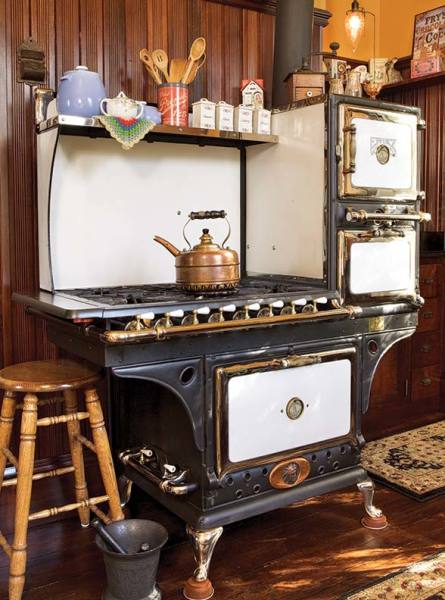
With three ovens, this 1915 vintage Eriez stove is in mint condition and fully functional. (Photo: Blackstone Edge Studios)
Different ways of furnishing a period kitchen are all acceptable practice, and you can tailor any of them to an old house—or combine them—with good results.
The first approach is to go with the real thing: restored, vintage appliances of a style or era that might once have appeared in your home (or that you were lucky enough find tucked away in the basement). The older the house, of course, the less practical is this idea. While the big black cookstove was a staple in modern kitchens by the 1850s, early refrigerators and dishwashers date just to about 1920. The sweet spot for vintage is probably the 1940s and 1950s. The older and more desirable the appliance, the pricier it will be.
Code Compliance
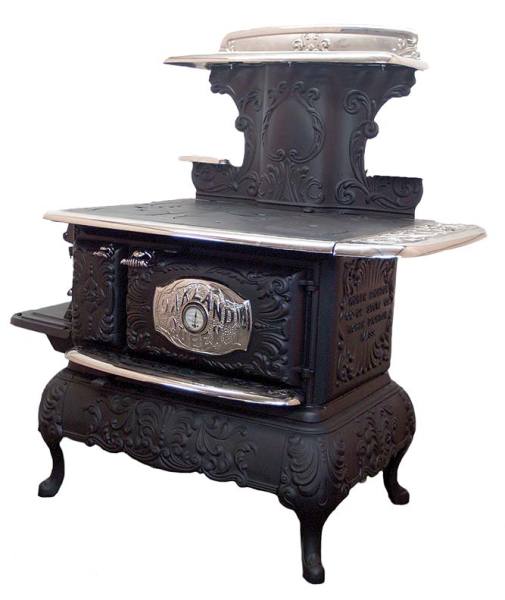
The nickel-trimmed Oakland Queen from Good Time Stove burns both coal and wood, but can be safely retrofitted for gas or electric and is fully insulated for zero-clearance and vent-free installation.
If you’ve inherited a period appliance that seems to be in working condition, make sure it’s safe to use. For ranges, check working parts like flash tubes and oven pilot assemblies for rust, pinholes, or loose connections. Clean all accessible areas inside and out. For refrigerators, make sure the gasket seals tightly and check for any coolant leaks.Then have an experienced appliance professional or your fuel or electric company inspect it to make sure it complies with modern safety codes. If your appliance needs a complete retrofit (or if you want a certain brand or style), dozens of companies recondition old appliances. For a range, reconditioning means taking it apart, cleaning, inspecting, and reassembling or replacing working parts like gas valves, thermostats, and oven pilot assemblies. Pilot lights and thermostats are calibrated to meet modern codes. The range can be converted from one fuel to another (coal to gas, or gas to electric, for example). The interior gets new insulation and gaskets.
For refrigerators, compressors, condenser coils, thermostats, and other working parts are inspected and either overhauled or replaced. (New refrigeration systems typically use environmentally friendly refrigerants.) A good dealer will also fit the fridge with a custom-made gasket, and if necessary, a new door liner.
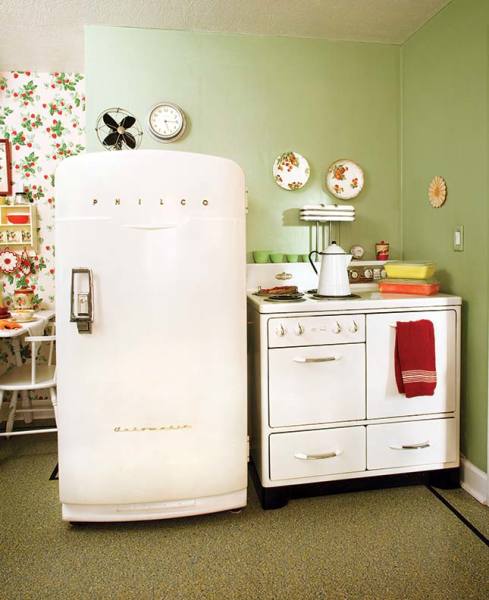
The working 1947 stove and ’50s-era refrigerator add to the period appeal in a 1947 house. (Photo: Blackstone Edge Studios)
The second approach is to choose new appliances that approximate the look of period ones, or that are outright reproductions. Don’t assume that all repros are ’50s-specific; some are actually patterned on 19th-century originals. Keep in mind that the basic shape of the kitchen range has changed little over the decades, and the fridge has looked more-or-less the same since the 1920s. The differences are in the details: nickel trim in the 1880s, two-tone enamel in the 1920s, and streamlined chrome fittings in the 1940s and ’50s. Some high-end ranges offer details like enamel finishes or nickel-trimmed knobs that resonate with period styles.
A third way is to buy a suite of contemporary appliances with clean, straightforward lines in a neutral, time-honored material like white enamel or stainless steel, tying the kitchen to the rest of the house by other means (cabinets with period molding details and finish, for instance). Stainless steel is the most popular finish available today, guaranteeing a wide range of choices and price points.
All that said, there’s no such thing as a cookie-cutter approach to period style. Appliances that look right in a 1950s ranch are likely to look out of place in a Queen Anne, and vice versa. Here are some tips on how to mix and match by the era of the house (or kitchen addition).
Colonial–1850
Keep it quiet. Choose appliances with muted colors and simple trim. Whenever practical, slip them out of sight. Disguise the refrigerator with paneling based on period doors in the kitchen or elsewhere in the house. Since hiding the range is impractical, place it front and center: choose one that bears a resemblance to the big black ranges first introduced in the mid-19th century. Chances are something like it once sat in your kitchen.
The Art of Concealment
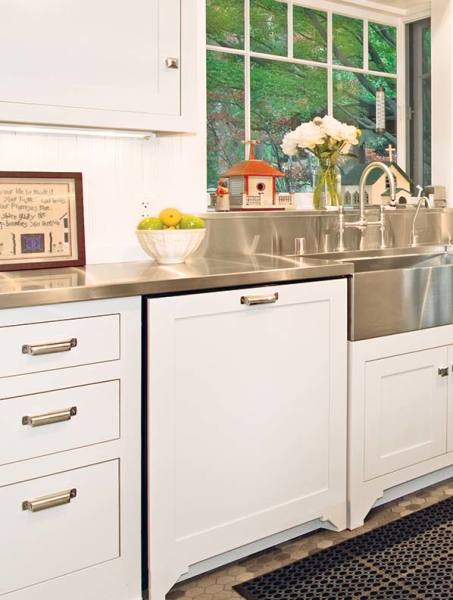
Minimize the impact of a built-in dishwasher by hiding it behind a panel matching the rest of the cabinets. (Photo: Chris Considine)
Can’t stand the thought of modern appliances spoiling the looks of your pristine colonial or Greek Revival kitchen? Distraught at the thought of roughing it without a dishwasher? The solution is obvious: tuck as many contemporary intrusions out of sight as possible. Dishwashers literally disappear into the woodwork with front panels that match cabinetry. Tuck the stovetop out of sight when not in use with a primitive-painted stovetop cover. Some companies even sell kits that transform a contemporary double-sided refrigerator into a replica of a full-size icebox. Just keep in mind that a freestanding fridge clad in quarter-sawn oak is still as large as one in its original stainless-steel skin, a tip-off.
1850–1900
Victorian-era kitchens may be a little more flamboyant. Go for a large dark stove with nickel or chrome embellishment. If you can afford it, clad the fridge in one of those quarter-sawn oak icebox trim kits, complete with period hardware. You may still want to hide the dishwasher out of sight behind a cabinet panel, and conceal countertop appliances in the pantry.
1900–1930
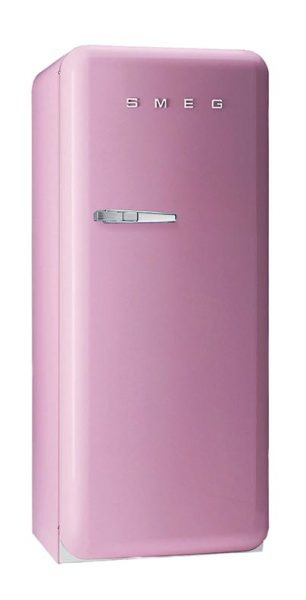
SMEG’s retro-inspired fridge comes in several colors, including Mamie Eisenhower pink.
Style choices abound in this era, depending on the style of the house and personal taste. A restored vintage range from the 1920s or ’30s in white enamel with nickel trim isn’t out of the question, although a desirable one could set you back $10,000. Dial the clock back for an icebox look, or roll it forward with a ’40s look-alike reproduction fridge.
1930–1960
Vintage choices run the gamut from real Monitor Top refrigerators (snap up single-width units for as little as $400 before restoration) to ranges in a variety of storied brand names from the glory years of vintage stoves (Chambers, O’Keefe & Merritt, Wedgewood). Or get a similar look (and the option of a matching suite of appliances) with retro-style appliances from a choice of manufacturers, like Big Chill and GE’s new Artistry collection.







